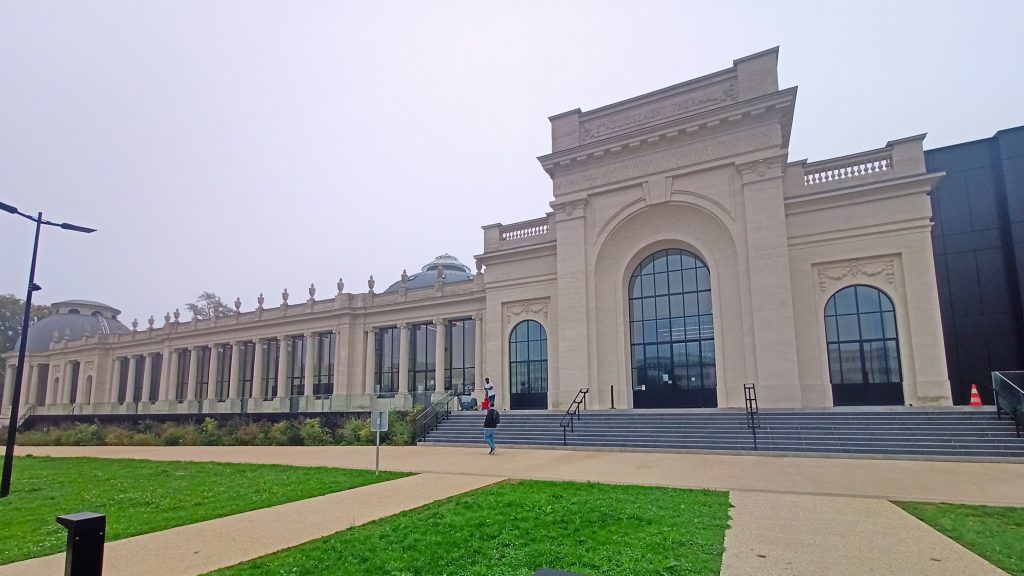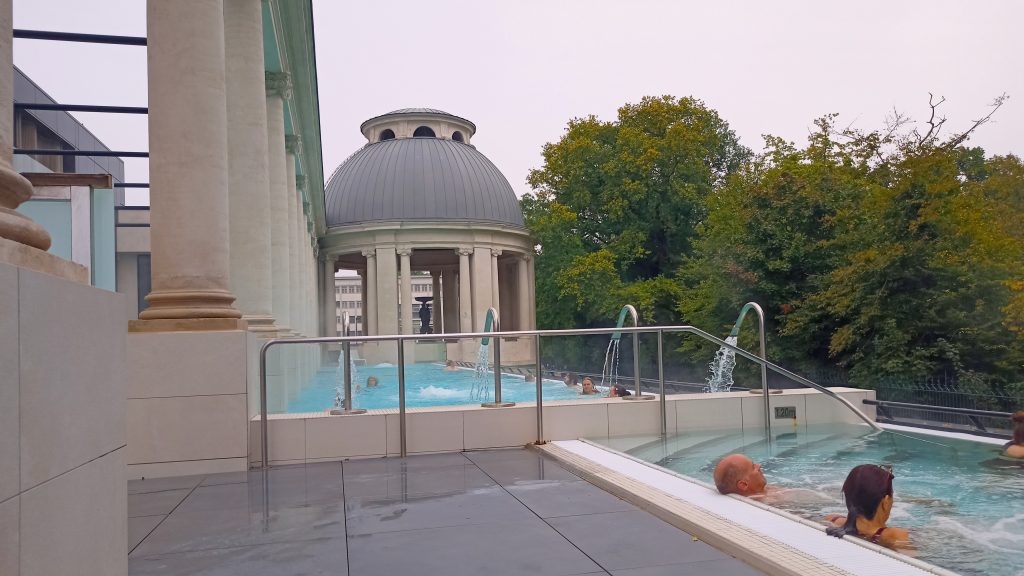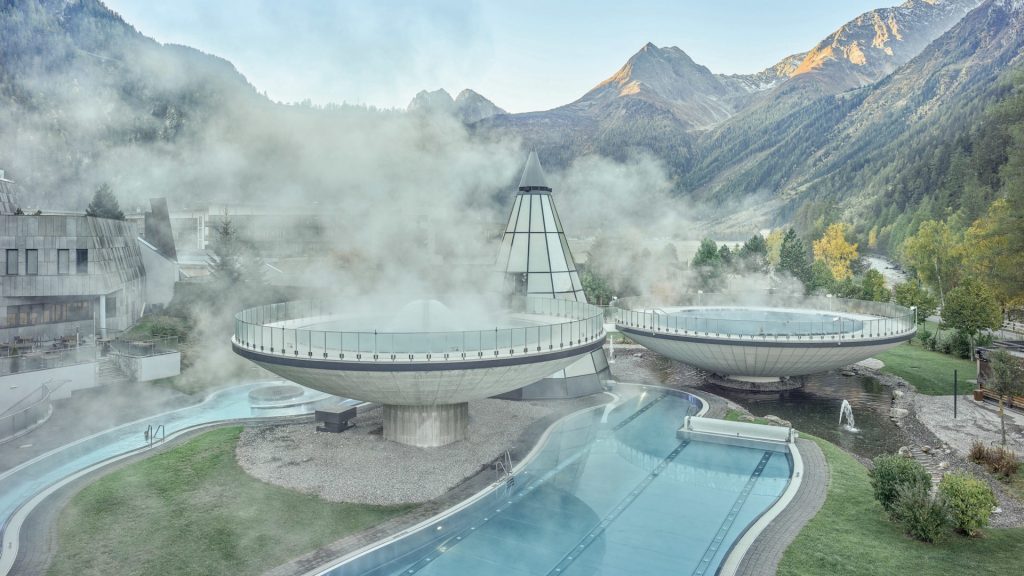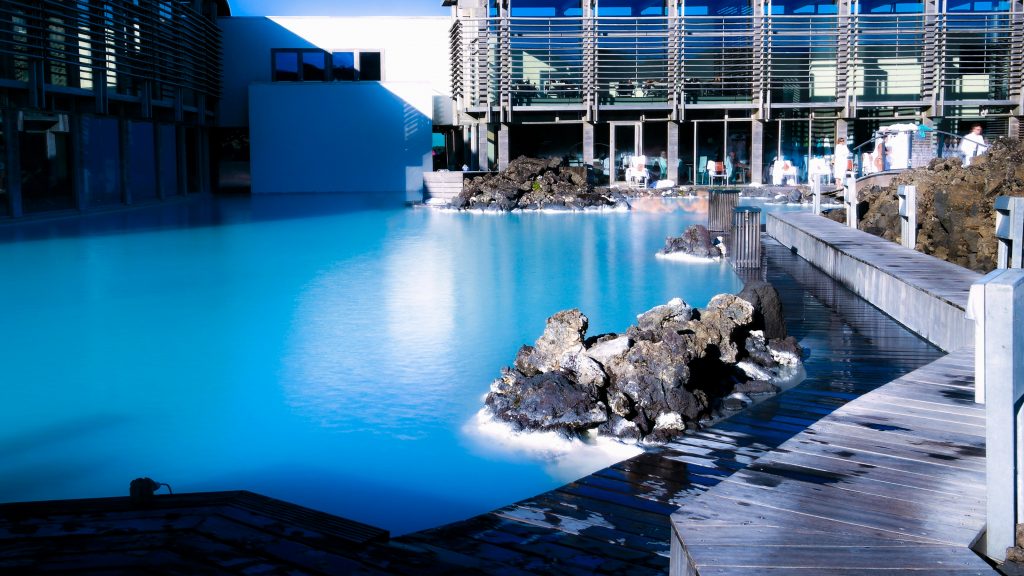This Sunday I was treated to a morning at a spa with my daughter. This is not something I am used to. I am not someone who spends a lot of time and money on beauty treatments, I tend towards the natural look, and I prefer to spend any spare money I have on travelling. So this was a bit of a step into the unknown, and what a treat it turned out to be.

France has many areas where there are natural thermal spas, the most famous town being perhaps Evian. The full name is Evian les Bains, in fact any town you see with “les Bains” or “Thermes” at the end are traditional spa towns. Whilst the tradition of bathing in spa waters dates back to the Gallo Romans, it was in the 17th and 18th centuries when physicians started to use the water to treat chronic ailments and spa establishments started to form. The 19th century saw a huge expansion in spas and treatment centres. The railways allowed the aristocracy and bourgeois access to the, often remote, towns and medical endorsement promoted the use of water cures. Many spa towns transformed into resort centres with casinos, grand hotels and formal promenades. This period that shaped the “spa-town” look that still remains today.
Following the second world war thermal cures became institutionalised and the state started to reimburse the cures (normally an 18 day treatment) through the health system. Unbelievably, doctors are still prescribing these cures in 2025. This may go a long way to explain why there are so many spa towns in France. An astonishing 472 000 people benefitted from a medical prescribed thermal cure in 2024 (a figure that is down 100 000 from pre Covid numbers).
So I suppose it is no surprise that I felt much improved after my session in the thermal waters.

We went to Nancy Thermal. The history of the spa dates back to the early 20th century when the warm mineral water was discovered and the site developed. In 1913 the establishment was reputed to have one of the largest mineral pools in the world. In a sad turn of events the breakout of war curtailed plans for the site and in the following decades the establishment fell into disrepair. In the early 21st century plans were started to rekindle the site and in 2023 the Nancy Thermal complex opened its doors.
It is a large site that combines family facilities, aqua sport leisure pools (fed with mineral water) and the thermal spa.

The thermal spa is in the old part of the building, and the original “piscine ronde” has been retained and refurbished. It is a joy to plunge into warm water under a domed roof with stained glass panels. With no chlorine to sting the eyes or make the area smell clinical it is a wholly relaxing experience. One of the pools leads to the outside where you can swim or sit in the jacuzzi overlooking the trees. It was a misty morning and the steam rising from the pools made the whole thing somewhat dream like. Hot and cold plunge pools greatly add to the experience, although my daughter left the cold pools to me preferring the bath temperature of the warm pool.
We had access to the sauna and hammam area in the “wellness” section, but didn’t take advantage of any of the treatments offered in the health section of the building.
It was an overwhelmingly positive experience that I am keen to repeat. I think a few hours in a spa would be a great addition to any European itinerary and is a great way to sooth bones and muscles tired from all the exploring.
Here are three of the top thermal spa experiences in Europe that are now on my list for future trips.
Széchenyi Baths : Budapest Hungary

This is possibly the most famous thermal baths in Europe and certainly one of the most recognisable with its yellow neo-Baroque architecture. Széchenyi Baths actually opened in the same year as the Nancy thermal baths, 1913. However, they never really suffered from a downturn, closing only briefly after some damage in World War II, and more recently due to Covid.
The water comes out of the source at a surprising 74°C (165°F) (as a comparison the water in Nancy comes out of the source at 37°C / 98°C) and is then mixed with cold water to reach bathing temperature. The mineral content is high in calcium, magnesium and sulphates which are said to be particularly beneficial to joint and muscle pain.
There are a total of 15 indoor pools and 3 outdoor pools as well as whirlpools, saunas and steam rooms. The baths are popular with both locals and tourists and can get busy in the afternoon and early evening so a morning visit is advised to avoid the crowds (the baths open at 8am).
I think this would be a great addition to a Budapest itinerary, particularly in winter when bathing outdoors at 38°C while there is snow on the ground would be dreamy.
Aqua Dome : Austria

Whilst the use of the thermal springs in Längenfeld dates back to the 16th century with a communal bathing area, it wasn’t until 1997 that a deep bore hole tapped into the geothermal reservoir leading to the establishment of the Aqua Dome resort.
The first thing you notice about this resort is the futuristic looking pools which seem somehow out of place in the majestic alpine landscape. If you want to combine a spa trip with a hiking or skiing vacation, then this is the place to come. Situated in the Ötztal Valley it is just an hour away from Innsbruck.
The water here is rich in sulphur, as well as calcium and bicarbonates, making it particularly beneficial for rheumatism, arthritis and respiratory issues. There are a total of 12 different pools including the two large outdoor pools heated to 34 and 36°C.
Aqua Dome is not only favoured for its thermal pools but also for its saunas. It should be noted that the sauna areas are naked and are mixed sex so if you aren’t comfortable with that then this isn’t the spa for you. Sauna world is part of the complex open to the public, with several themed saunas including a hay barn sauna (not sure what that entails if I’m honest, but I am intrigued). Guests at the hotel have access to a private area, Spa3000, with more baths and saunas and a panoramic view. The hotel itself has a well rated restaurant so the relaxation would be complete.
Blue Lagoon : Iceland

The Blue Lagoon spa in Iceland has a totally different history. Rather than being a historic building with a natural mineral water source, it started as the runoff from a geothermal power plant.
Iceland has hardly any fossil fuels of its own and so relied heavily on imported oil. During the oil crisis in 1973 the price of fuel went so high the government were forced to look for an alternative, which they found in their natural hot springs and steam vents. Geothermal production started at the Svartsengi site in 1976 and electricity production began in 1978. The runoff water from this production (which is a hot mineral brine) was discharged into the nearby lava fields where it formed pools. The locals took advantage of this hot water and started bathing in it. Then one day in 1981 a psoriasis sufferer noted relief after bathing in the water which started investigation into the therapeutic properties of the water.
What started as a clinic for psoriasis treatment has grown over the years into a luxurious spa retreat. The water, which is a mix of sea water and fresh water, is particularly rich in silica which is what gives the water its distinctive milky blue colour. The particular mineral and algae content makes the water of the Blue Lagoon particularly good for treating skin conditions but isn’t so good for your hair (many people protect their hair or add conditioner before bathing). The Blue Lagoon Spa is one of the most popular tourist spots in Iceland so booking ahead is essential.
European itineraries including spas
I will definitely be looking out for spas in the future to include in my European itineraries. Including a relaxing and recuperating element to travel itineraries is a great way to mix things up a little, and avoid becoming overwhelmed with yet more beautiful European buildings. I have left behind my preconceived ideas that spas are only for those interested in beauty treatments and have come to realise that the wellness aspect is far more important. Each spa is different, with its own benefits, but I for one will be seeking out spas where I can swim outside in bath temperature water whilst admiring the wintery scenery.
If you are planning your first trip to Europe then make sure your read How to plan a trip to Europe: the 3 essential first steps
If you need help with planning your trip then check out our services
If you have any questions about travel itineraries in Europe then drop us a line. We are happy to help.
If you want more tips and ideas for visiting Europe then FOLLOW ME ON INSTAGRAM
